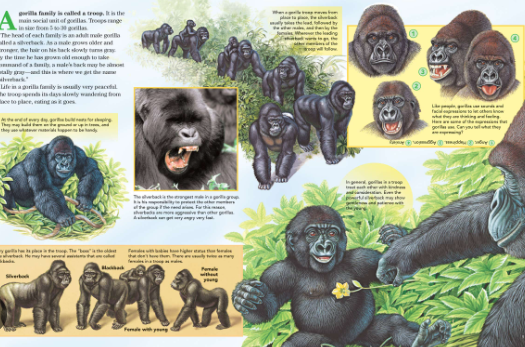The Role of Male Gorillas in Protecting the Group
Gorillas are fascinating creatures that showcase social structures and behaviors that are complex and deeply rooted in their survival. Understanding the role of male gorillas in protecting their groups is crucial, as these magnificent animals not only play a pivotal role in ensuring the safety of their families but also contribute to the overall health of their ecosystems. In this blog post, we’ll explore the importance of male gorillas, their protective behaviors, and the challenges they face.
The Protector of the Family
Male gorillas, particularly silverbacks, are primarily responsible for the safety and well-being of their group, known as a troop. These robust leaders are often the largest and strongest of the group, equipped with a powerful physique that deters potential threats. When faced with danger, such as predators or rival groups, the silverback will position himself between the threat and his family, displaying aggressive behaviors to ward off intruders. This protective instinct is vital for the survival of the troop, especially when it comes to safeguarding the younger members, whose survival is crucial for the continuation of the species.
Social Dynamics and Leadership
Beyond physical protection, male gorillas also play a significant role in maintaining social harmony within the group. The silverback establishes himself as the leader through a combination of strength, experience, and calmness. By asserting his dominance, he helps to manage conflicts among group members, ensuring that harmony prevails. A well-respected leader fosters cooperation among the troop, creating a safer environment where all members can thrive. This social structure not only contributes to the safety of the group but also enhances the group’s chances of thriving in their natural habitat.
Challenges Faced by Male Gorillas
Despite their formidable nature, male gorillas face numerous threats that jeopardize their ability to protect their groups. Habitat loss due to human activities, such as logging and agriculture, reduces the availability of resources for gorilla troops. Additionally, poaching and illegal wildlife trade continue to pose challenges, leading to declining populations. Conservation efforts are essential to support these magnificent creatures and ensure that male gorillas can continue their vital roles as protectors of their families. By understanding these challenges, we can take steps to minimize human impact and promote gorilla conservation initiatives.
In conclusion, male gorillas are integral to the safety and well-being of their troops. Their strength, leadership, and protective instincts play a critical role in maintaining social structures and responding to threats. As we learn more about these incredible animals, let us remember the importance of preserving their habitats and supporting conservation efforts. Together, we can help ensure that these noble protectors continue to thrive for generations to come. If you’re interested in learning more about gorilla conservation, consider supporting organizations dedicated to this vital cause.

